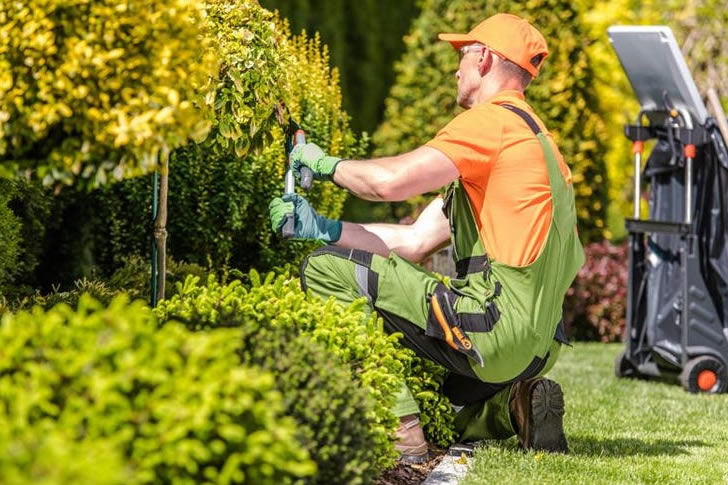Transform Your Yard: A Guide to Landscape Design
Designing a beautiful and functional landscape can greatly enhance your home’s aesthetic appeal and increase its value.

Understanding Landscape Design
Landscape design involves planning, designing, and managing outdoor spaces to create aesthetically pleasing and functional environments. It encompasses various elements, including plants, water features, pathways, lighting, and outdoor structures.
The Benefits of Professional Landscape Design
Hiring a professional landscape designer can offer several benefits:
- Expertise: Professionals bring knowledge and experience to create a cohesive and functional design.
- Increased Property Value: A well-designed landscape can significantly increase your home’s market value.
- Time and Effort Savings: Professionals handle the design and installation, saving you time and effort.
- Customization: A landscape designer can tailor the design to your preferences and needs.
Elements of Landscape Design
Plants and Greenery: Plants are the foundation of any landscape design. Choosing the right plants for your climate, soil type, and maintenance preferences is crucial. Consider incorporating a mix of trees, shrubs, flowers, and ground cover for visual interest and biodiversity.
Hardscaping: Hardscaping includes non-living elements such as patios, walkways, retaining walls, and outdoor kitchens. These features add structure and functionality to your landscape.
Water Features: Water features like fountains, ponds, and waterfalls can create a soothing ambiance and become focal points in your garden.
Lighting: Outdoor lighting enhances the beauty of your landscape and provides safety and security. Consider using a combination of path lights, spotlights, and accent lights.
Outdoor Structures: Pergolas, gazebos, and arbors provide shade and create cozy outdoor living spaces. These structures can be customized to match your home’s architecture and style.
Finding a Landscape Designer
When searching for a landscape designer for your home, consider the following steps:
Research and Recommendations: Start by researching local landscape designers online. Check their websites, portfolios, and customer reviews. Ask friends, family, and neighbors for recommendations.
Evaluate Credentials: Ensure the designer is licensed, insured, and has the necessary certifications. Professional affiliations, such as membership in the Association of Professional Landscape Designers (APLD), can indicate a commitment to industry standards.
Review Portfolios: Examine the designer’s portfolio to see examples of their previous work. Look for designs that align with your style and vision.
Consultations and Estimates: Schedule consultations with multiple designers to discuss your project and get estimates. This will give you a sense of their approach, creativity, and cost.
Ask the Right Questions: During consultations, ask the following questions:
- What is your design process?
- Can you provide references from past clients?
- What is the estimated timeline for the project?
- Do you handle the installation, or do you subcontract the work?
Cost Considerations
The cost of landscape design can vary widely based on the size and complexity of the project, the materials used, and the designer’s experience. On average, homeowners can expect to spend between $5,000 and $15,000 for a comprehensive landscape design and installation. Here are some factors that can influence the cost:
Design Fees: Some designers charge an hourly rate, ranging from $50 to $150 per hour, while others offer a flat fee for the entire project.
Materials and Plants: The cost of materials and plants will depend on the quality and quantity of items selected. High-end materials and mature plants will increase the overall cost.
Labor: Labor costs can vary based on the complexity of the installation and the region. Expect to pay more for intricate designs and features.
Maintenance: Consider the long-term maintenance costs associated with your landscape design. Some designs require more upkeep than others, which can impact your budget.
Tips for Working with a Landscape Designer
Communicate Your Vision: Clearly articulate your preferences, needs, and budget to the designer. Providing inspiration photos and a wish list can help convey your vision.
Be Open to Ideas: While it’s important to communicate your vision, be open to the designer’s suggestions and expertise. They may offer innovative solutions and ideas you hadn’t considered.
Establish a Budget: Discuss your budget upfront to ensure the designer can create a plan that aligns with your financial constraints.
Plan for the Future: Consider how your landscape will evolve over time. Choose plants and materials that will thrive in your climate and accommodate future changes or additions.
Regular Check-Ins: Stay involved in the process by scheduling regular check-ins with the designer. This will ensure the project stays on track and any concerns are addressed promptly.
Conclusion
Investing in professional landscape design can transform your outdoor space into a beautiful and functional extension of your home. By following the steps outlined in this article, you can find a skilled landscape designer who will bring your vision to life and create a stunning landscape that enhances your property’s value and appeal.







Recent Comments